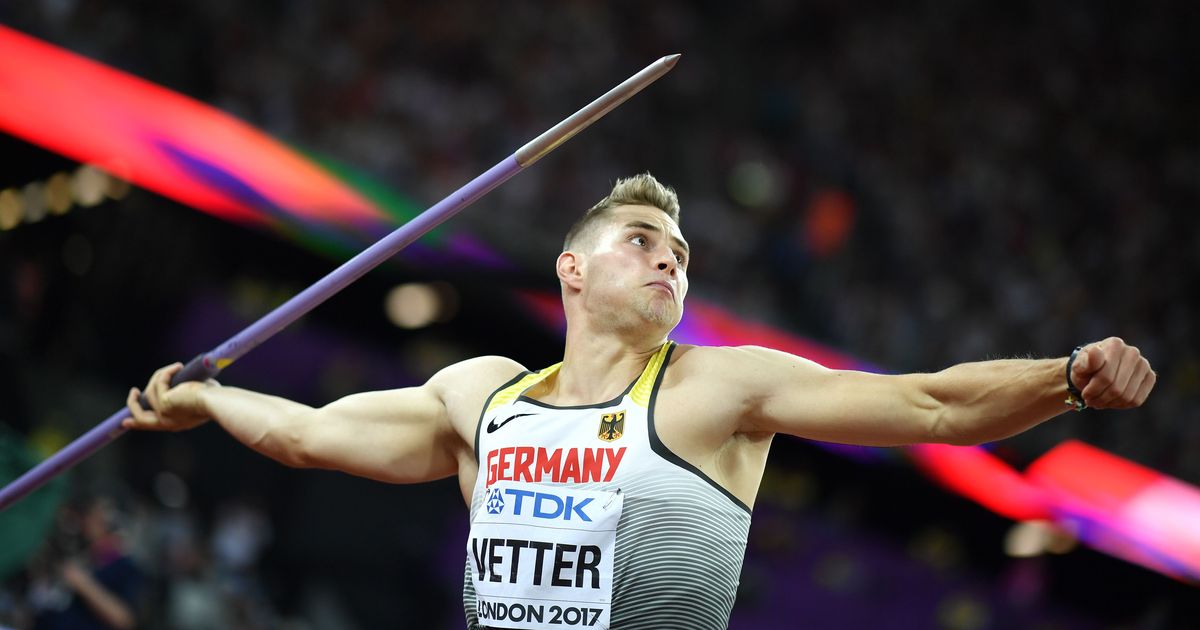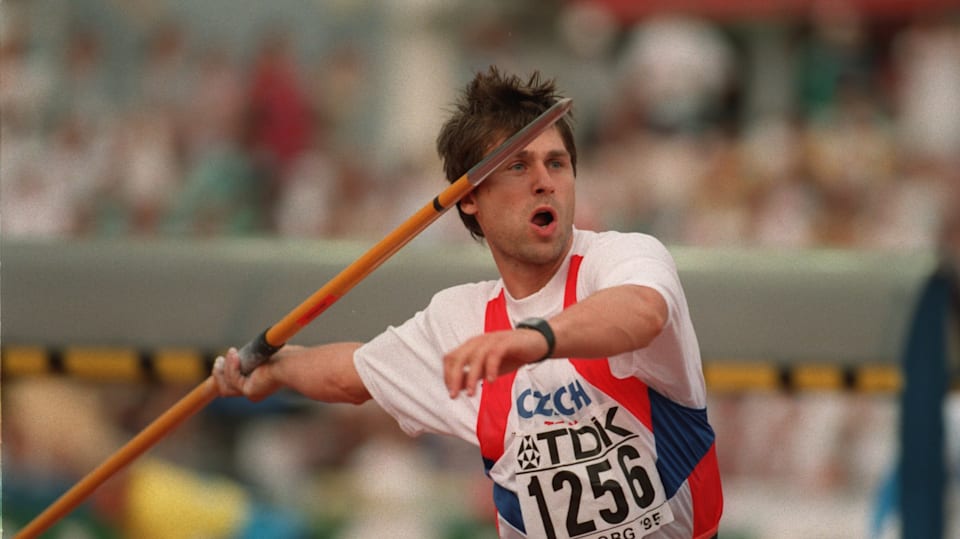History of the Javelin World Record
The javelin throw, a test of strength, technique, and precision, has witnessed a remarkable evolution of the world record over the years. From humble beginnings to the extraordinary distances achieved today, the record reflects the combined efforts of dedicated athletes, innovative equipment, and evolving throwing techniques.
Timeline of the Javelin World Record Progression
The progression of the javelin world record showcases the remarkable advancements in athletic prowess and technological development. Here is a timeline highlighting some of the key milestones:
- 1912: Finnish athlete Jonni Myyrä set the first official world record with a throw of 62.32 meters at the Stockholm Olympics. This marked the beginning of a journey towards ever-increasing distances.
- 1930s: Matti Järvinen, another Finnish athlete, dominated the javelin scene, setting the world record multiple times. He reached a remarkable 71.70 meters in 1938, a distance that stood for 15 years.
- 1950s: The javelin world record continued to rise, with athletes from Finland, Sweden, and the Soviet Union pushing the boundaries. Janusz Sidło from Poland set a new record of 84.64 meters in 1959, signifying a significant leap in throwing distance.
- 1960s: Terje Pedersen from Norway established a new world record of 88.58 meters in 1964. This record remained unbroken for over a decade, reflecting the challenge of surpassing such a remarkable distance.
- 1970s: Klaus Wolfermann from West Germany broke Pedersen’s record in 1976 with a throw of 94.14 meters. This was a pivotal moment, marking a new era of javelin throwing with the introduction of the “javelin revolution.”
- 1980s: The javelin world record continued to be pushed by athletes like Uwe Hohn from East Germany. He achieved a phenomenal 104.80 meters in 1984, a record that stood for over 20 years.
- 2000s: The javelin world record remained untouched for over two decades until Jan Železný from the Czech Republic surpassed Hohn’s mark in 1996, throwing an incredible 98.48 meters. He went on to break his own record several times, ultimately achieving a world-record throw of 98.48 meters in 1996, a distance that stood for over two decades.
Technological Advancements in Javelin Design
Technological advancements played a crucial role in the evolution of the javelin world record. The introduction of new materials and designs significantly impacted the performance of the javelin and its ability to achieve greater distances.
- The “Javelin Revolution”: The 1970s witnessed a significant change in javelin design, known as the “javelin revolution.” The traditional wooden javelin was replaced by a lighter, more aerodynamic javelin made of aluminum and fiberglass. This new design allowed for greater stability and control during flight, enabling athletes to throw farther.
- Center of Gravity Shift: The introduction of a more forward center of gravity in the javelin design led to a significant increase in distance. This allowed the javelin to penetrate the air more efficiently, reducing drag and increasing flight time.
- Aerodynamic Improvements: The evolution of javelin design has focused on improving its aerodynamic properties. The use of materials like carbon fiber and the optimization of the javelin’s shape and profile have significantly reduced air resistance, allowing the javelin to travel further.
Historical Context Surrounding the Javelin World Record
The javelin world record is not merely a record of distance but a reflection of the evolving landscape of athletics and the impact of major sporting events.
- Evolution of Javelin Throwing Techniques: Over the years, javelin throwing techniques have evolved significantly, with athletes refining their approaches, run-ups, and release points. The development of new techniques, such as the “reverse-fouling” technique, has enabled athletes to achieve greater distances.
- Impact of Major Sporting Events: The Olympic Games and World Championships have served as platforms for showcasing the best javelin throwers in the world and inspiring new generations of athletes. These events have provided a competitive environment that has driven athletes to push the boundaries of human performance.
Current Javelin World Record Holder

Jan Železný, a Czech athlete, holds the current world record in men’s javelin throw. He achieved this remarkable feat on May 25, 1996, at the IAAF Grand Prix meeting in Jena, Germany, with a throw of 98.48 meters.
Železný’s achievement stands as a testament to his exceptional athleticism and mastery of the javelin throw. His record has remained unbroken for over two decades, highlighting the difficulty of surpassing such a remarkable performance.
Throwing Technique of Jan Železný
Železný’s throwing technique is characterized by a powerful and fluid motion, utilizing his entire body to generate maximum force. His technique is often described as a combination of speed, power, and precision. Key elements of his technique include:
- A strong and efficient run-up, building momentum for the throw.
- A smooth and controlled transfer of momentum from the run-up to the throwing arm.
- A high release point, maximizing the distance the javelin travels.
- A powerful and accurate release, ensuring the javelin is thrown with the desired trajectory.
Železný’s technique has been studied and analyzed extensively, with many aspiring javelin throwers seeking to emulate his success. His approach to the sport has influenced generations of athletes, emphasizing the importance of proper technique and a focus on generating maximum power.
Comparison to Previous Record Holders, Javelin world record
Previous javelin world record holders, such as Uwe Hohn and Seppo Räty, employed similar throwing techniques, focusing on generating power and maximizing the javelin’s release point. However, Železný’s technique was characterized by a greater emphasis on speed and fluidity, allowing him to achieve a higher release point and generate greater force.
- Hohn’s technique, while powerful, was somewhat rigid and lacked the fluidity of Železný’s approach.
- Räty’s technique, while more fluid, did not generate the same level of speed and power as Železný’s.
Železný’s ability to combine speed, power, and precision in his technique allowed him to surpass the previous world records and set a new standard for the sport.
Factors Contributing to the World Record
Several factors contributed to Železný’s world record, including:
- His exceptional athleticism, with a combination of strength, speed, and coordination.
- His meticulous attention to technique, constantly refining his approach to maximize performance.
- His unwavering dedication to the sport, training relentlessly to achieve his goals.
- The use of modern javelin technology, with advancements in materials and design enhancing performance.
The combination of these factors allowed Železný to achieve a remarkable performance that has stood the test of time, solidifying his position as one of the greatest javelin throwers of all time.
Yo, the javelin world record is crazy, right? It’s like watching a rocket launch, but with a stick. And speaking of crazy, you gotta check out the olympics javelin throw history – it’s full of epic throws and intense competition.
Seeing those guys chuck that spear makes you wanna grab one and give it a whirl, but maybe we should stick to the track team, ya know? Anyway, breaking the world record would be the ultimate flex, but it’s gonna take some serious skill and dedication.
Yo, that javelin world record is straight fire, right? It’s like, the ultimate test of strength and skill. And with the India Olympics 2024 coming up, I’m hyped to see if anyone can break it. I’m betting on some crazy throws, like, seriously, the competition is gonna be off the charts!

